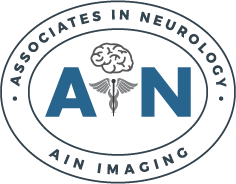
Cerebral palsy (CP) is a neurological condition that can affect movement, coordination, and muscle tone or posture. The condition is the most widespread motor disability in childhood and is thought to affect between 5,500 and 13,100 children in the U.S. each year. While CP is a lifelong condition, early intervention and appropriate management can significantly improve a patient’s quality of life. You can learn more below about the various causes, types, and treatment approaches for cerebral palsy.
What Causes Cerebral Palsy?
Cerebral palsy is the name for a group of disorders that affect a person’s coordination and their ability to move and maintain balance. Cerebral – meaning to do with the brain, and palsy – meaning weakness or a problem using the muscles. The condition is caused by damage or abnormal development of the brain during pregnancy, childbirth, or shortly after birth. CP may also develop during the first year of a child’s life, while the brain is still developing, but this is much less common.
In many cases, the exact cause of CP is unknown, but there are certain reasons and risk factors that may increase the chance of the condition, including:
- Premature birth
- Low birth weight
- Multiple births
- Infection during pregnancy
- Exposure to toxic substances
- Head injuries
- Meningitis
- Lack of oxygen or blood flow to the brain
Signs and symptoms of CP are not usually obvious straight away and typically start to appear during infancy or preschool years.
Types of Cerebral Palsy
CP is classified depending on the main type of movement disorder involved. This may include spasticity (stiff muscles), dyskinesia (uncontrollable movements) and/or ataxia (poor balance and coordination) depending on which area of the brain is affected.
There are four main types of cerebral palsy. These include:
- Spastic CP – The most common form of cerebral palsy, characterized by stiff and tight muscles that cause awkward movements.
- Dyskinetic CP – Characterized by involuntary, uncontrolled movements of the hands, arms, feet, and legs, which can make sitting and walking difficult. In some cases, the face and tongue may be affected.
- Ataxic CP – Causes problems with coordination and balance, such as when walking, reaching for something, or writing.
- Mixed CP – A combination of spastic, dyskinetic, and/or ataxic CP.
Diagnosis and Treatment of Cerebral Palsy
Getting an early diagnosis for CP is crucial to the individual’s well-being. A combination of methods and tools are used to diagnose CP, including a physical and neurological exam and specialized assessment checklists. Imaging technologies such as an MRI scan, a cranial ultrasound, or electroencephalogram (EEG) are used to detect areas of damage or abnormal development in the brain.
Although there is currently no cure for CP, there are a variety of treatment options to help manage symptoms. To treat CP successfully, it usually involves a team approach with different healthcare professionals involved in the patient’s care. The best treatment will depend on factors such as the severity of the condition, the symptoms, and how they affect the person. Proper management can help patients achieve their full potential.
Some of the most common treatment approaches for CP are:
- Medications – Depending on the type of cerebral palsy, medications can help manage and relieve symptoms such as pain, seizures, and spasticity, and to reduce muscle tightness to improve functional ability.
- Muscle or nerve injections, such as Botox injections for muscle spasticity.
- Physical therapy – Aims to strengthen and improve motor function, reduce pain, and improve mobility.
- Occupational therapy – To encourage independence and learn the best ways to carry out everyday tasks and essential living skills, such as dressing, writing, or eating independently.
- Speech and language therapy – A therapist can help with communication difficulties. This may include exercises to improve speech or learning to use an alternative method of communication, such as sign language or a device to generate speech.
- Surgery to correct deformities, improve motor function, or restore movement, such as orthopedic surgery or selective dorsal rhizotomy (cutting nerves that serve spastic muscles).
Living with Cerebral Palsy
Living with cerebral palsy can present many challenges, but with early intervention and appropriate management, patients can lead happy and fulfilling lives. Advances in modern medicine, such as medical care, technological innovations, and other supportive treatments are helping to improve the lives of people with CP. If you or a loved one is living with CP, talk to a healthcare provider about what support and appropriate treatments are available to improve your symptoms and overall quality of life.
While there is no cure for CP, having the right treatment and support can make a world of difference. As a patient or caregiver, it’s essential to know the various treatment options available and to seek the support you need. Keep in mind that every person with CP is unique, and treatment needs to be tailored to suit each individual’s specific needs.
Cerebral Palsy Treatment in Southeast Michigan
At Associates in Neurology, we provide comprehensive care for patients with cerebral palsy. Our experienced and highly trained specialists have the skills and advanced technology to diagnose cerebral palsy and provide long-term treatment, which aims to improve strength, flexibility, mobility, balance, and motor development.
To learn more about us and the services we provide, contact us today at (248) 478-5512 and schedule an appointment at one of our convenient locations. Alternatively, you can also use our secure, online request an appointment form to schedule your visit.


